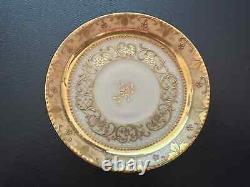
- Homepage
- Brand
- Aynsley (31)
- Coalport (35)
- Dresden (47)
- Franz (37)
- Haviland (39)
- Herend (68)
- Hermes (86)
- HermÈs (319)
- Kpm (58)
- Limoges (75)
- Lomonosov (45)
- Meissen (188)
- Royal Albert (28)
- Royal Copenhagen (35)
- Royal Crown Derby (31)
- Royal Vienna (29)
- Royal Worcester (29)
- Shelley (28)
- Spode (38)
- Sèvres (36)
- ... (2804)
- Character
- Material
- Bone China (46)
- Ceramic (35)
- Ceramic & Porcelain (138)
- Ceramic / Porcelain (3)
- Ceramic, Porcelain (12)
- China (2)
- Copper (2)
- Copper & Porcelain (5)
- Earthenware (2)
- Egg Shell Porcelain (2)
- Fine Bone China (4)
- Glass (2)
- Not Specified (2)
- Porcelain (1878)
- Porcelain / 22k Gold (2)
- Porcelain / China (141)
- Porcelain Bone (2)
- Porcelain, Gold (2)
- Pottery (9)
- White Porcelain (2)
- ... (1795)
- Pattern
- Set Includes
- Cappuccino Cup (6)
- Coffee Cup (19)
- Complete Tea Set (18)
- Cup (43)
- Cup & Saucer (23)
- Cup & Saucer Set (408)
- Cup / Saucer (23)
- Cup And Saucer (31)
- Cup, Cup Lid, Saucer (9)
- Cup, Saucer (71)
- Espresso Cup (7)
- Gaiwan (4)
- One Cup One Saucer (46)
- Saucer (135)
- Saucer, Tea Cup (39)
- Soup Plate (6)
- Tea Cup (20)
- Tea Cup & Saucer (39)
- Tea Cup & Saucer Set (135)
- Tea Cup Saucer (11)
- ... (2993)
- Shape
Dresden 369w demitasse Saucer with Golden encrusted floral pattern 3.8 Diameter







The Dresden 369W demitasse saucer with a golden encrusted floral pattern is a fine example of the intricacy and elegance that defines high-quality porcelain craftsmanship. Dresden porcelain, named after the capital city of Saxony, Germany, is renowned for its delicate artistry and luxurious designs, often sought after by collectors and connoisseurs of fine china. The history of Dresden porcelain dates back to the early 18th century, when Augustus the Strong, Elector of Saxony and King of Poland, established the first porcelain manufactory in Europe at Meissen, just outside Dresden.
This marked the beginning of what would become an extensive tradition of porcelain making in the region, and many porcelain makers in Dresden followed in the footsteps of Meissen, producing exquisite porcelain works that were highly prized across Europe. The Dresden porcelain manufactory was particularly known for its attention to detail, its fine hand-painted designs, and the use of luxurious gold and platinum accents in many of its pieces, a hallmark that continues to be present in Dresden porcelain today. The 369W demitasse saucer, with its golden encrusted floral pattern, is likely to have been produced by one of the many fine Dresden porcelain manufacturers, which over the centuries included not only the renowned Meissen factory but also a number of independent workshops that produced some of the finest examples of porcelain art. This saucer is small, with a diameter of 3.8 inches, which is characteristic of demitasse pieces designed for the serving of small, strong coffee or espresso. Demitasse cups and saucers were popular in European coffee culture, especially in the 18th and 19th centuries, as the consumption of coffee became more widespread among the upper classes.
The term'demitasse' literally translates from French as "half-cup, " reflecting the small, concentrated servings of coffee that were traditionally served in these delicate pieces of china. The fine porcelain used to create the Dresden saucer contributes not only to its aesthetic appeal but also to its durability and refined feel, with the smooth surface providing a perfect backdrop for the lavish gold-encrusted floral pattern.
The floral design on the saucer is characteristic of the type of decoration that was highly favored in European porcelain production during the 18th and 19th centuries. Flowers, particularly in bright, vivid colors, were a recurring motif in both painting and decorative arts, symbolizing beauty, nature, and the transient qualities of life.
The floral pattern on the saucer may have been meticulously hand-painted or applied using advanced techniques, such as underglaze painting or overglaze enameling, both of which were commonly used by Dresden porcelain artisans. The use of gold encrusting, a technique in which gold leaf or gold paint is applied to the surface of the porcelain, adds a level of opulence and luxury to the piece. Gold accents were a common feature in European porcelain during the 18th and 19th centuries, especially on pieces that were intended for the wealthy elite or as gifts for royalty and dignitaries. The gilding process requires a high level of skill, as the gold must be carefully applied to the porcelain without damaging the delicate surface. This gold encrusting would have not only enhanced the visual appeal of the floral design but also added a tactile dimension to the piece, as the raised gold areas would have provided a textured contrast to the smooth, lustrous surface of the porcelain. The combination of fine porcelain, intricate floral patterns, and luxurious gold detailing on the Dresden demitasse saucer serves as a reminder of the wealth, refinement, and artistry associated with European porcelain production during the 18th and 19th centuries. Pieces like this saucer were often commissioned by aristocratic families or wealthy collectors who sought to display their status and taste through the use of finely crafted, decorative items in their homes.The demand for porcelain dinnerware, cups, and saucers reached its peak during the Rococo and Neoclassical periods, when porcelain was regarded as one of the most desirable and fashionable materials for tableware. The intricate floral and gold designs on porcelain pieces were often admired for their delicate beauty, and many of these pieces became treasured heirlooms passed down through generations. The delicate nature of Dresden porcelain also made it highly collectible, as enthusiasts of fine china and porcelain sought out pieces that could complement their collections of porcelain figurines, vases, and other decorative objects.
This demitasse saucer is an example of how European porcelain pieces were not only functional but also served as a form of artistic expression, with each piece showcasing the skill and creativity of the craftsmen who produced them. As a collector's item, the Dresden 369W demitasse saucer offers insight into the craftsmanship of European porcelain makers during the 18th and 19th centuries.
Its finely executed floral pattern, gilded detailing, and luxurious finish place it in the category of objects designed to evoke a sense of wealth and refinement. Even today, Dresden porcelain continues to be highly regarded for its quality, beauty, and historical significance, and pieces like this saucer remain cherished by collectors around the world. The value of such pieces, especially those with intricate hand-painted designs and gold accents, is often determined by factors such as rarity, condition, and provenance. The 369W saucer, with its combination of fine craftsmanship, luxurious materials, and timeless design, represents a piece of porcelain history that continues to captivate those who appreciate the artistry and elegance of the past.

